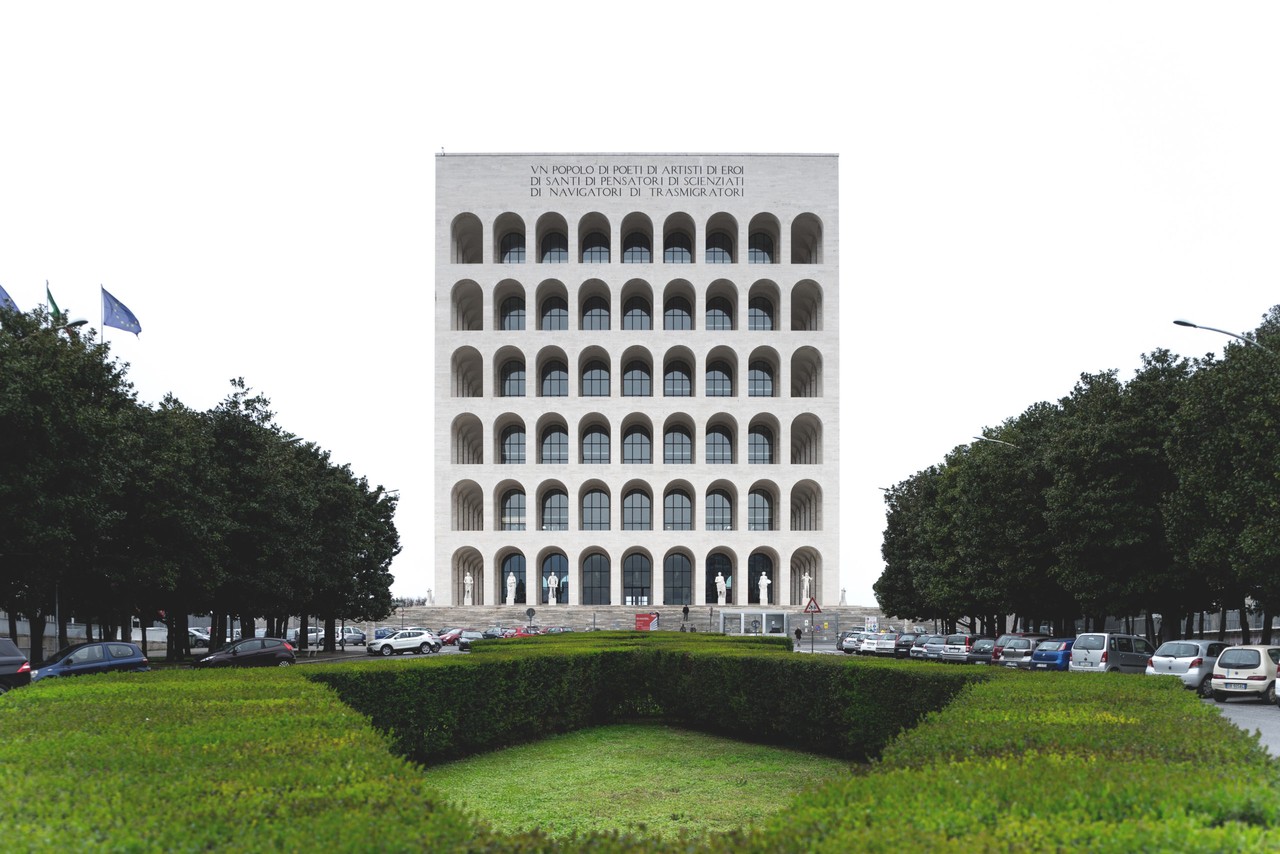EUR was designed in the second half of the 1930s for an exposition to celebrate the twentieth anniversary of the March on Rome and of fascist rule. Originally known as E42, its name was changed into EUR, an acronym for Rome Universal Exposition (Esposizione Universale di Roma). Due to the outbreak of the Second World War the exposition, which was due to begin in 1942, never took place and the original planning was never completed.
The district is inspired by classic Roman city planning, with some elements of Italian rationalism. The planning includes a large road system and towering, massive and squared buildings, mostly made of marble and travertine to resemble temples and buildings of the Roman age. The symbolic building of this architecture model is the so-called Squared Colosseum, a nickname for the Palace of Italian Civilisation, inspired by metaphysical art.
